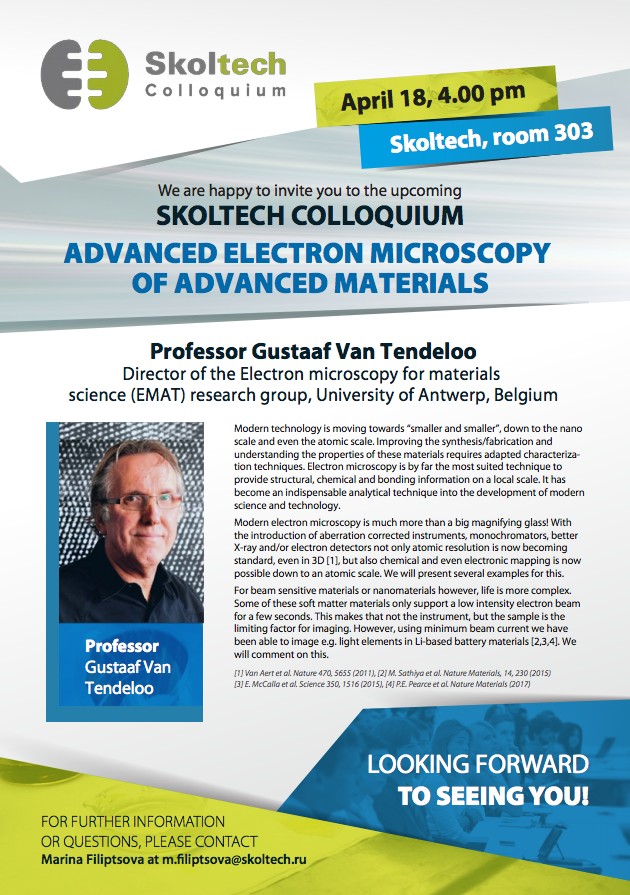
Dear all,
We are happy to invite you to the upcoming SKOLTECH COLLOQUIUM!
When: April 18, 4.00 pm
Where: Skoltech, room 303
What:
Professor Gustaaf Van Tendeloo, Director of the Electron microscopy for materials science (EMAT), University of Antwerp, Belgium
Abstract
Modern technology is moving towards “smaller and smaller”, down to the nano scale and even the atomic scale. Improving the synthesis/fabrication and understanding the properties of these materials requires adapted characterization techniques. Electron microscopy is by far the most suited technique to provide structural, chemical and bonding information on a local scale. It has become an indispensable analytical technique into the development of modern science and technology.
Modern electron microscopy is much more than a big magnifying glass! With the introduction of aberration corrected instruments, monochromators, better X-ray and/or electron detectors not only atomic resolution is now becoming standard, even in 3D [1], but also chemical and even electronic mapping is now possible down to an atomic scale. We will present several examples for this.
For beam sensitive materials or nanomaterials however, life is more complex. Some of these soft matter materials only support a low intensity electron beam for a few seconds. This makes that not the instrument, but the sample is the limiting factor for imaging. However, using minimum beam current we have been able to image e.g. light elements in Li-based battery materials [2,3,4]. We will comment on this.
[1] Van Aert et al. Nature 470, 5655 (2011)
[2] M. Sathiya et al. Nature Materials, 14, 230 (2015)
[3] E. McCalla et al. Science 350, 1516 (2015)
[4] P.E. Pearce et al. Nature Materials (2017)
For further information or questions, please contact Marina Filiptsova at m.filiptsova@skoltech.ru
Looking forward to seeing you!
